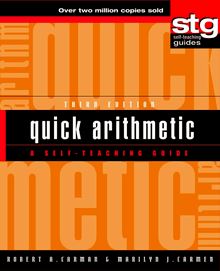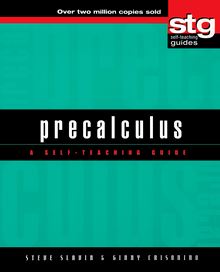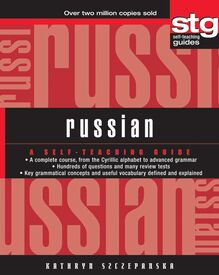Russian , livre ebook
230
pages
English
Ebooks
2007
Vous pourrez modifier la taille du texte de cet ouvrage
Obtenez un accès à la bibliothèque pour le consulter en ligne En savoir plus
Découvre YouScribe en t'inscrivant gratuitement
Découvre YouScribe en t'inscrivant gratuitement
230
pages
English
Ebooks
2007
Vous pourrez modifier la taille du texte de cet ouvrage
Obtenez un accès à la bibliothèque pour le consulter en ligne En savoir plus
Publié par
Date de parution
10 août 2007
Nombre de lectures
3
EAN13
9780470247297
Langue
English
Poids de l'ouvrage
2 Mo
a self-teaching guide
Learn Russian at your own pace
How do Russian letters differ from English letters? How do you choose the correct form of specific verbs? What are some useful, everyday Russian words? With Russian: A Self-Teaching Guide, you'll discover the answers to these questions and many more about this challenging language.
This thorough primer presents an easy-to-follow, proven method for grasping the basics of Russian, complete with helpful tips on writing and pronouncing Cyrillic characters and building your Russian vocabulary. You get lively dialogues and reading exercises, concise lessons on grammar and usage, notes on Russian culture, and a compact Russian-English glossary. The clearly structured format of Russian makes it fully accessible, providing an easily understood, comprehensive overview for everyone from students to business and leisure travelers to Russian culture mavens.
Like all Self-Teaching Guides, Russian allows you to build gradually on what you have learned--at your own pace. Questions and self-tests reinforce the information in each chapter and allow you to skip ahead or focus on specific areas of concern. Packed with useful, up-to-date information, this clear, concise volume is a valuable learning tool and reference source for anyone who wants to improve his or her understanding of basic Russian.
Acknowledgments.
1. The Russian Alphabet.
2. The Noun.
3. The Accusative Case.
4. The Adjective.
5. The Verb.
6. The Prepositional Case.
7. Present Tense Verbs.
8. The Dative Case.
9. Aspect of Verbs.
10. Future Tense and Imperative Mode.
11. The Dative Case (continued).
12. The Genitive Case.
13. The Genitive Plural.
14. The Instrumental Case.
15. Verbs of Motion.
16. The Prepositional, Dative, and Instrumental Plural.
17. Participles.
Russian-English Vocabulary.
Publié par
Date de parution
10 août 2007
Nombre de lectures
3
EAN13
9780470247297
Langue
English
Poids de l'ouvrage
2 Mo
Russian
A Self-Teaching Guide
Kathryn Szczepanska
Copyright 2005 by Kathryn Szczepanska. All rights reserved
Published by John Wiley Sons, Inc., Hoboken, New Jersey Published simultaneously in Canada
No part of this publication may be reproduced, stored in a retrieval system, or transmitted in any form or by any means, electronic, mechanical, photocopying, recording, scanning, or otherwise, except as permitted under Section 107 or 108 of the 1976 United States Copyright Act, without either the prior written permission of the Publisher, or authorization through payment of the appropriate per-copy fee to the Copyright Clearance Center, 222 Rosewood Drive, Danvers, MA 01923, (978) 750-8400, fax (978) 646-8600, or on the web at www.copyright.com . Requests to the Publisher for permission should be addressed to the Permissions Department, John Wiley Sons, Inc., 111 River Street, Hoboken, NJ 07030, (201) 748-6011, fax (201) 748-6008, or online at http://www.wiley.com/go/permissions .
Limit of Liability/Disclaimer of Warranty: While the publisher and the author have used their best efforts in preparing this book, they make no representations or warranties with respect to the accuracy or completeness of the contents of this book and specifically disclaim any implied warranties of merchantability or fitness for a particular purpose. No warranty may be created or extended by sales representatives or written sales materials. The advice and strategies contained herein may not be suitable for your situation. You should consult with a professional where appropriate. Neither the publisher nor the author shall be liable for any loss of profit or any other commercial damages, including but not limited to special, incidental, consequential, or other damages.
For general information about our other products and services, please contact our Customer Care Department within the United States at (800) 762-2974, outside the United States at (317) 572-3993 or fax (317) 572-4002.
Wiley also publishes its books in a variety of electronic formats. Some content that appears in print may not be available in electronic books. For more information about Wiley products, visit our web site at www.wiley.com .
ISBN-13 978-0-471-26989-2 (paper) ISBN-10 0-471-26989-1 (paper)
Printed in the United States of America
10 9 8 7 6 5 4 3 2 1
In memory of Bruce Everett Fritch (1936-1985)
Contents
Acknowledgments
1 The Russian Alphabet
2 The Noun
3 The Accusative Case
4 The Adjective
5 The Verb
6 The Prepositional Case
7 Present Tense Verbs
8 The Dative Case
9 Aspect of Verbs
10 Future Tense and Imperative Mode
11 The Dative Case (continued)
12 The Genitive Case
13 The Genitive Plural
14 The Instrumental Case
15 Verbs of Motion
16 The Prepositional, Dative, and Instrumental Plural
17 Participles
Russian-English Vocabulary
Acknowledgments
I hereby acknowledge publicly to my former professors at Stanford University-Joseph A. Van Campen and Dina B. Crockett-that they were right about everything. I am grateful to the editors at John Wiley Sons for their unstinting generosity of time and labor, especially to John Simko for his attention to detail, Jeff Golick for his patience, and copy editor Dobrochna Dyrcz-Freeman for her sharp eye and mind. To Stan and Nancy, the sine qua non of my existence, a big fat punch in the nose. And to my Muse and herself a future author, Pamela Rose Machado, thanks for keeping me up at all hours of the day and night, and for simply being you.
1
The Russian Alphabet
The Russian alphabet, also called Cyrillic, consists of thirty-three letters representing thirty-one sounds and two signs that have no phonetic value of their own. It is attributed to the Greek monks Cyrill and Methodius, who came as missionaries to Christianize the Slavic countries and left their mark on the language as well. Modified forms of this alphabet are still in use today in countries other than Russia, including Bulgaria and some of the new nations of the former Yugoslavia.
Approximately one-third of the Cyrillic alphabet consists of letters that are identical to the Roman alphabet, with a phonetic value that is either almost equal or similar. Another third of the letters are recognizable to Westerners because of their Greek origin: is the Greek pi , is the Greek rho , and so forth. The final third consists of letters that were created to represent sounds in the Slavic languages that had no counterpart in the original Greek of the missionary monks. Some of these letters have a Hebrew origin, such as the letter [sh]. 1
Although there are visual and phonetic similarities, almost no Russian letter is pronounced in quite the same way as its English counterpart. Russian vowels are purer and more clear than English vowels, and, except for combinations with the consonant-glide , do not form diphthongs. Many Russian consonants form hard and soft pairs, which are not easy to represent in English. Consonants that are plosive in English ( p, b, t, d ) are not plosive in Russian, which makes their pronunciation for English speakers difficult. And last, the famous Russian fricatives [sh], [zh], [ch], [sh ], [ts] pose challenges all their own.
You will find a complete list of the Russian alphabet on page 13 .
Sounds and Spelling
Vowels
There are ten Russian letters for five vowel sounds:
The vowels in the first column are called hard and are written at the beginning of a word and after hard consonants. The vowels in the second column are the soft vowels. They are written after soft consonants and when the word begins with an iotated vowel (the sound [y]). Compare the following: (alto)- (Yalta); (Emilia)- (Yelena); (Olga)- (hedgehog); (Urals)- (Yuri). The letters representing the sound [i] do not quite fit this paradigm, since their pure sounds are not quite the same. Nonetheless, they obey the rule above: the is written after hard consonants and the after soft consonants.
Consonants
Hard or Soft
Russian consonants may be either hard or soft. 2 Most English consonants are pronounced with a hard articulation, but most Russian consonants can be pronounced either way. By far the best example for English speakers of the difference between a hard and a soft consonant is the Spanish consonant and the English letter n. The sound also occurs occasionally in English words, such as onion and poignant. As a device to assist in the pronunciation of Russian soft consonants, some textbooks suggest the insertion of the glide [y] between the consonant and the following vowel so that a hard n plus a would be transcribed as [na] and a soft n plus a as [nya]. This device is not quite correct, but it can be useful to help the student achieve a correct pronunciation.
The following list of consonants shows the hard and soft pairs possible in modern Russian. For ease in pronunciation, they are shown with the vowel letters and .
Hard
Soft
There are six consonants in Russian that are either hard or soft, but not both. The three always-hard consonants are [zh], [ts], and [sh]. No matter which vowel follows them, they will always be pronounced hard. The three consonants that are always pronounced soft are [ch], [sh ], and ([y] as in boy ). These facts have various consequences for the writing system. None of these consonants may be followed by the vowel (the vowel is written instead). In addition, the vowels and appear as and . The result is the all-important seven-letter spelling rule:
After the fricatives , , , , and the velars , , , do not write , , or ; instead, write , , or .
The letter is not part of this spelling rule. The full explanation for this spelling rule can be appreciated only with an understanding of the historical morphology of Russian.
The pronunciations of the consonants , , , and differ from their transliterated values [zh], [ch], [sh], and [sh ]. In fact, their articulation in terms of hardness and softness is opposite to their sounds in English. In Russian, the consonants and are always hard, whereas they are soft in English. The reverse is true for the consonants and . This will explain the English transliteration of the name of the composer as Tchaikovsky , which attempts to move the articulation of the sound [ch] to the front of the mouth, toward the teeth, to more accurately reflect the correct pronunciation. In other words, start to pronounce [t] and then immediately follow with [ch].
As for the hard consonants, there is no way to represent on paper the whooshing sound of the letters and in the mouth of a native speaker. Focus your attention on passing the air past your molars, in the back or your mouth, rather than at your front teeth. But by all means, find a Russian who can produce for your ear the true sound of these letters.
One further fact must be mentioned regarding the fricatives and . In the Moscow (or Standard) pronunciation, the first is pronounced as a hard [sh], which does not appear in English. But the second, the Russian , is pronounced as a soft [sh], which corresponds exactly to the English. In the Petersburg pronunciation, however, the letter is pronounced with a further articulation as [shch]. This pronunciation is actively discouraged not only by the faculty of the Language Department of Moscow State University but also by teachers of Russian abroad, who find that students have a most difficult time with this letter. The sound itself occurs in English within a word (for instance, question ) or between words ( fresh cheese ) but does not occur in initial position.
Voiced or Devoiced
Russian consonants may be either voiced or devoiced. This phenomenon is observed only in the pronunciation of Russian words but serves to explain one of the peculiarities of the Russian accent that is occasionally encountered in English. Voiced consonants are pronounced with the vocal cords, and devoiced consonants without. The f


